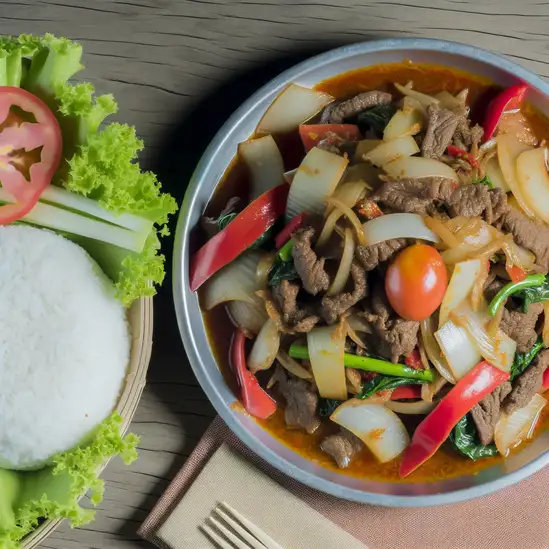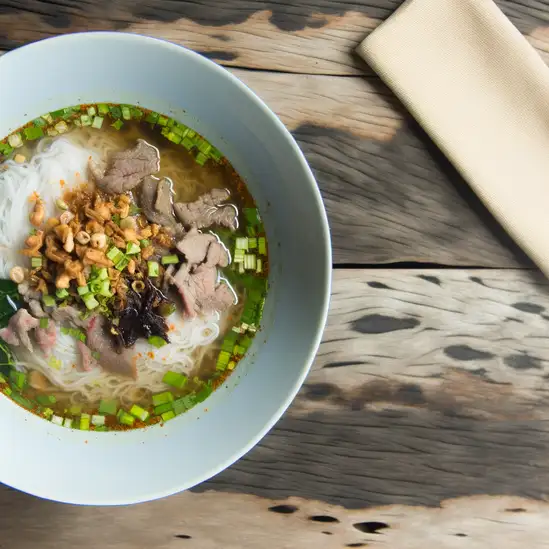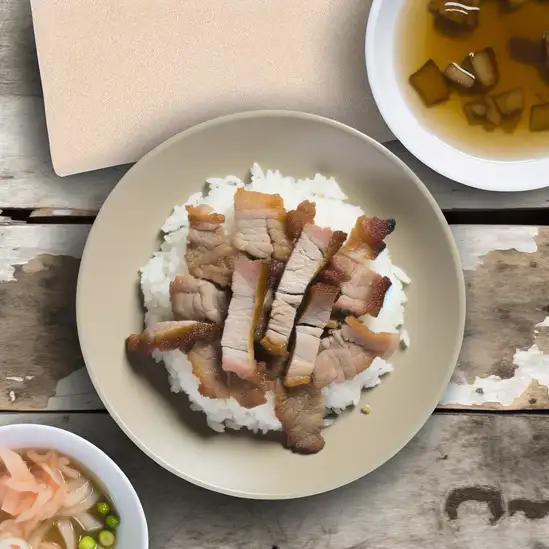



If you find yourself wandering through Cambodia,Khan Châmkar Mon is one of those places that quietly seeps into your heart. The moment you step into its lively streets,there’s this warm,unhurried rhythm that wraps around you—like the city is inviting you to slow down and soak it all in. The air carries a mix of fragrant spices from street vendors grilling skewers,mingling with the earthy scent of nearby markets bursting with fresh produce and vibrant flowers. It’s a sensory dance that feels both familiar and wonderfully new. Walking through Khan Châmkar Mon,you’ll notice the colorful tapestry of daily life:locals chatting animatedly over steaming bowls of noodle soup,children darting between motorbikes,and monks in saffron robes moving serenely through the bustle. The architecture is a charming blend of traditional Khmer homes and quirky,modern touches,giving the city a personality that’s both rooted and evolving. There’s a genuine friendliness here—people smile easily,and you’ll often find yourself invited to share a meal or a story. What really makes Khan Châmkar Mon stand out is its balance of energy and calm. You can dive into vibrant markets and lively street scenes,then retreat to quiet riverside spots where the gentle lapping of water and the rustle of palm leaves create a peaceful soundtrack. It’s a place where culture feels alive in every corner,and every moment offers a chance to connect—with the city,its people,and maybe even a little bit with yourself.
The information on this page is currently being reviewed by Tripkliq and should be used as a guide only
Eng word: Hello
Eng pronunciation: suo sdei
Local language: សួស្តី
Eng word: Goodbye
Eng pronunciation: lea howie
Local language: លាហើយ
Eng word: Thank you
Eng pronunciation: aw kohn
Local language: អរគុណ
Eng word: How much
Eng pronunciation: bon man
Local language: ប៉ុន្មាន
Eng word: Toilet
Eng pronunciation: bong kohn
Local language: បង្គន់
Eng word: Help me
Eng pronunciation: chouy khnhom
Local language: ជួយខ្ញុំ
Eng word: Yes
Eng pronunciation: baat (for males) / chaa (for females)
Local language: បាទ/ចាស
Eng word: No
Eng pronunciation: te
Local language: ទេ
Eng word: Excuse me
Eng pronunciation: som toh
Local language: សូមទោស
Khan Châmkar Mon, one of the central districts of Phnom Penh, translates to 'Mulberry Farm District,' reflecting its agricultural roots and connection to Cambodia's rich farming heritage.
The Independence Monument, located in Khan Châmkar Mon, was built in 1958 to commemorate Cambodia's independence from France in 1953. It is a symbol of national pride and a must-visit landmark for tourists.
Khan Châmkar Mon is home to the Royal University of Phnom Penh, the oldest and largest university in Cambodia, which has been a center of education and intellectual growth since its establishment in 1960.
The Boeung Keng Kang 1 (BKK1) area in Khan Châmkar Mon is a vibrant hub for expatriates, tourists, and locals, offering a mix of modern cafes, restaurants, and boutique shops.
Wat Langka, one of Phnom Penh's oldest pagodas, is located in Khan Châmkar Mon. It was founded in 1442 and serves as a place of meditation and spiritual learning for visitors and locals alike.
Preah Sihanouk Garden, located in Khan Châmkar Mon, is a beautifully landscaped park where visitors can relax and enjoy the serene environment amidst the bustling city.
Khan Châmkar Mon is home to AEON Mall, one of Cambodia's largest shopping centers, offering a modern shopping experience with international brands, entertainment, and dining options.
The Bassac Riverfront in Khan Châmkar Mon offers stunning views and a peaceful atmosphere, making it a favorite spot for evening strolls and enjoying the sunset.
While somber, the Tuol Sleng Genocide Museum in Khan Châmkar Mon serves as an important historical site, educating visitors about Cambodia's history and honoring the resilience of its people.
In Khan Châmkar Mon, the most common Power Adaptor is Type A, Type C, Type G.







Stir-fried beef marinated in soy sauce and served with rice, often accompanied by a lime and pepper dipping sauce.

A flavorful noodle soup made with rice noodles, herbs, and a choice of meat, often garnished with lime and chili.

Grilled pork served over rice, typically accompanied by pickled vegetables and a side of broth.

A traditional Cambodian curry made with fish, coconut milk, and a blend of spices, often served in a banana leaf.

A popular breakfast dish consisting of rice noodles topped with a fish gravy and fresh herbs and vegetables.
Imagine stepping into a place where the air hums with the gentle rhythm of waves lapping against sun-warmed shores,and the scent of salty sea mingles with fragrant street food stalls. That’s Phuket for you—a vibrant island that feels alive in every sense. It’s not just the stunning beaches that grab you,but the way the island pulses with a laid-back energy,where colorful markets buzz with chatter and the aroma of grilled seafood fills the air. Walking through the old town,you’ll find charming Sino-Portuguese buildings painted in pastel hues,their shutters creaking softly in the tropical breeze,while tuk-tuks zip by,adding a playful soundtrack to your explorations.
Phuket’s character is a beautiful blend of tradition and liveliness. Temples with golden spires peek out from lush greenery,inviting quiet moments of reflection,while nearby,night markets burst with life—vendors calling out,sizzling woks,and the sweet tang of mango sticky rice tempting your taste buds. The island’s culture is warm and welcoming,with locals who smile easily and share stories over cups of strong Thai coffee or fresh coconut water.
What makes Phuket truly special is how it wraps you in its embrace—whether you’re watching a fiery sunset from a cliffside bar,diving into crystal-clear waters teeming with vibrant marine life,or simply savoring the spicy kick of a freshly made curry. It’s a place that invites you to slow down,soak in the colors,sounds,and flavors,and leave with a heart full of unforgettable moments.
Bali feels like stepping into a vibrant dream where every corner pulses with life and warmth. From the moment you arrive,there’s this unmistakable energy—part spiritual,part playful—that wraps around you like a soft,tropical breeze. Imagine waking up to the gentle rustle of palm leaves and the distant sound of waves crashing against volcanic black sand beaches. The air carries a mix of frangipani blossoms and salty sea spray,instantly grounding you in the island’s natural beauty.
What really makes Bali special is its rich culture woven into everyday life. You’ll see locals in colorful sarongs offering flowers at temple steps,hear the rhythmic beat of gamelan music drifting through the air,and catch glimpses of intricate wood carvings and vibrant paintings in small artisan shops. The island’s spirituality isn’t just something you observe—it’s something you feel,a quiet presence that invites you to slow down and connect.
And then there’s the food—oh,the food! Freshly grilled satay,fragrant nasi campur bursting with spices,and tropical fruits so sweet they almost taste like candy. Whether you’re dining in a bustling market or a cliffside café overlooking the ocean,every bite feels like a celebration of Bali’s rich flavors and traditions. Honestly,Bali isn’t just a place you visit; it’s a place that stays with you,long after you’ve left.
If you find yourself wandering into Amphoe Mueang Krabi,get ready to be wrapped in a warm embrace of nature and culture that feels both vibrant and soothing. The moment you step into this lively district,the salty tang of the Andaman Sea mingles with the sweet scent of tropical flowers,setting a scene that’s as refreshing as it is inviting. The streets buzz gently with the chatter of locals and the clinking of street food stalls,where the aroma of grilled seafood and spicy herbs teases your senses and promises a feast.
What makes Mueang Krabi truly special is how effortlessly it balances its laid-back island charm with a pulse of authentic Thai life. You’ll find yourself wandering through bustling markets filled with colorful fruits,handmade crafts,and the friendly smiles of vendors eager to share stories. The rhythm of daily life here is unhurried but alive,with monks in saffron robes gliding past ancient temples,and fishermen hauling in their catch against a backdrop of limestone cliffs that rise dramatically from the turquoise waters.
Spend your days exploring hidden coves or kayaking through mangrove forests,and your evenings savoring fresh seafood at a beachside shack while the sun dips low,painting the sky in fiery hues. There’s a genuine warmth in the air—both from the tropical sun and the people—that makes you feel like you’re not just visiting,but truly belonging. Mueang Krabi isn’t just a place to see; it’s a place to feel,taste,and remember long after you’ve left.
Imagine stepping into a place where the ocean breeze carries the scent of salt and sizzling street food,and the rhythm of life feels both relaxed and vibrant—that’s Da Nang. This city pulses with an easygoing energy,where modern skyscrapers stand alongside ancient temples,and the laughter of locals blends with the gentle crash of waves. Walking along the Han River at dusk,you’ll catch the golden glow of the Dragon Bridge lighting up the night,its fiery breath a spectacle that feels almost magical.
Da Nang’s streets are alive with the aroma of fresh seafood grilling on open flames,mingling with the sweet fragrance of tropical fruits from bustling markets. The city’s character shines through its people—warm,welcoming,and proud of their rich heritage. You can hear the chatter of vendors,the clinking of glasses in cozy cafes,and the distant hum of motorbikes weaving through traffic,all creating a soundtrack that’s uniquely Da Nang.
What really sets this city apart is its blend of natural beauty and cultural depth. Just a short ride away,you can explore the Marble Mountains,where limestone caves and pagodas invite quiet reflection,or relax on My Khe Beach,feeling the soft sand between your toes. And when night falls,the city transforms with lively night markets and riverside bars,where you can savor local dishes like mi quang or fresh spring rolls,each bite bursting with flavor and history. Da Nang isn’t just a place to visit—it’s a place to feel alive.
Imagine stepping into a place where the past and present dance effortlessly together—that’s Penang Island for you. The moment you arrive,there’s this warm,inviting buzz in the air,a mix of bustling street markets,the chatter of locals,and the distant hum of the sea. George Town,the island’s heart,feels like an open-air museum sprinkled with vibrant street art,colonial buildings,and temples that tell stories of centuries gone by. Walking through its narrow lanes,you’ll catch the scent of spices,fresh herbs,and sizzling street food that’s impossible to resist.
Penang’s food scene is legendary,and it’s not just about eating—it’s a full-on sensory adventure. Picture biting into a char kway teow,the smoky wok hei flavor hitting your taste buds,or savoring a bowl of asam laksa,where tangy tamarind broth mingles with fresh fish and mint. Every meal feels like a celebration of the island’s rich multicultural heritage,blending Malay,Chinese,Indian,and even Nyonya influences.
Beyond the city,the island’s lush hills and palm-fringed beaches offer a peaceful contrast to the lively streets. You can hike up Penang Hill for panoramic views or unwind by the shore,feeling the gentle sea breeze. What really stays with you,though,is the genuine warmth of the people—friendly smiles,curious conversations,and a laid-back vibe that makes you want to linger just a little longer. Penang isn’t just a place to visit; it’s a place that invites you to slow down,savor life,and soak in its colorful,flavorful soul.
If you’re heading to Cambodia and craving a coastal escape with a laid-back yet lively spirit,Sihanoukville is where you want to land. The moment you step off the bus or boat,there’s this warm,salty breeze that wraps around you,carrying the faint scent of grilled seafood and tropical flowers. The city hums with a mix of chatter from local markets,the distant crash of waves,and the occasional call of street vendors selling fresh fruit or cooling coconut water. It’s a place where the pace slows down just enough to let you breathe in the island vibe without ever feeling bored.
What’s really special about Sihanoukville is how it blends raw natural beauty with a colorful,evolving culture. You’ll find stretches of golden sand fringed by palm trees,where fishermen mend their nets and kids splash in the shallows. At night,the town lights up with a mix of cozy beach bars and lively night markets,where you can savor spicy Khmer dishes or sip on a cold Angkor beer while chatting with travelers and locals alike. The city’s character feels genuine—unpolished but welcoming,with a spirit that invites you to slow down and soak it all in.
Whether you’re wandering through the bustling Phsar Leu market,hopping on a boat to nearby islands,or just lounging on the beach watching the sun dip below the horizon,Sihanoukville leaves you with a sense of calm adventure. It’s a place that feels like a warm hug from Cambodia’s coast,full of stories waiting to be discovered.
Tourists may be overcharged for drinks or unknowingly served expensive items at bars or clubs.
Scammers may pose as monks or charity workers, asking for donations that do not go to legitimate causes.
Some money changers may give counterfeit or outdated currency when exchanging money for tourists.
Unlicensed guides may offer tours but provide little value or mislead tourists about historical facts.
Some agencies sell fake bus or tour tickets, leaving tourists stranded or out of money.
Tourists are lured into buying fake or overpriced gemstones, often with promises of high resale value back home.
Rental agencies may claim damage to motorbikes upon return, demanding excessive repair fees.
Thieves on motorbikes or in crowded areas target tourists' bags, wallets, and phones.
Children or women with babies may beg for money, but the funds often go to organized groups exploiting them.
Tuk-tuk drivers may quote inflated prices for short distances, especially if tourists are unfamiliar with local rates.
Cambodia has strict anti-drug laws, and the possession, use, or trafficking of illegal drugs is heavily penalized. This includes substances like marijuana, which is illegal despite its availability in some areas. Tourists should avoid any involvement with drugs, as penalties can include heavy fines, imprisonment, or deportation.
In Khan Chamkar Mon, Cambodia, smoking is regulated under the country's broader tobacco control laws. Smoking is prohibited in certain public places, including schools, hospitals, and government buildings. Some restaurants, hotels, and other establishments may also have designated non-smoking areas. Tourists should look for 'No Smoking' signs and comply with local regulations to avoid fines.
Vaping is not explicitly regulated in Cambodia, but it is generally treated similarly to smoking. While there are no specific laws banning the use of e-cigarettes, their importation and sale are restricted. Tourists should exercise caution when using vaping devices in public spaces and respect any local rules or signage.
What are other people saying about Khan Châmkar Mon?
Recent Social posts about Khan Châmkar Mon
There is nothing to show you for now.